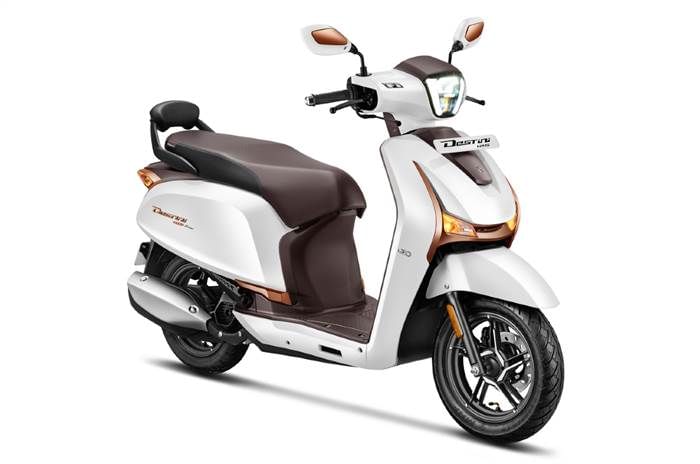Hero Destini 125 fuel economy tested, explained
The Destini 125 gets Hero’s i3s start/stop tech which aids fuel efficiency.
Published On May 31, 2025 08:00:00 AM
9,021 Views
Follow us onLast year Hero revamped its 125cc family scooter, the Destini and we have now been able to put it through our extensive testing routine. Here are the real-world mileage figures we achieved on the 2025 Hero Destini 125.
Hero Destini 125 real-world fuel efficiency
Destini's real-world mileage comes close to Hero's claimed numbers
As per our routine, the highway mileage run was conducted first, where we ran the Destini 125 for a little over 55km, after which it took almost a litre to brim the tank once more. Thereby, we achieved a 57.44kpl highway mileage figure for the Destini.
After that, we ran the Destini 125 inside the traffic-riddled streets of Mumbai for a smidge over 50km, after which it took less than a litre of petrol to brim the tank again. Thus, we arrived at a mileage figure of 58.26kpl inside the city.
Hero Destini 125 fuel-economy analysis
Start/stop tech helps the Destini inside the city
Hero claims a mileage number of 60kpl for the Destini and in our tests, it came quite close to that, achieving a combined 58kpl economy figure. Helping the Destini achieve this impressive number are a couple of factors. First, the engine’s punchy nature means you don’t need to wring its neck when making progress, thereby reducing wide open throttle openings and aiding fuel economy.

Second, Hero’s i3s start/stop tech cuts the engine off when you’re idling at a stop light and helps save fuel. Start/stop tech is quite beneficial inside city limits, and especially so on a vehicle where fuel economy plays a big factor in the purchase decision.
Autocar India’s fuel-efficiency testing
Our fuel-efficiency testing routine starts by first brimming the tank and ensuring the scooter is running the manufacturer’s recommended tyre pressures. The scooter is then ridden on fixed city and highway routes, where we maintain average speeds that best mimic real-world scenarios as well as keeping speed limits in mind. The payload on the scooters is kept constant by balancing rider weights and ballast, ensuring consistency across different vehicles and riders. At the end of the test cycle, the fuel tank is once again filled to the brim, giving us an accurate figure of how much fuel has been consumed against the trip meter reading.
Also See: Suzuki Access 125 real-world fuel economy tested, explained
TVS Jupiter real-world fuel economy tested, explained
Copyright (c) Autocar India. All rights reserved.






Comments
Member Login
Personal Details
No comments yet. Be the first to comment.